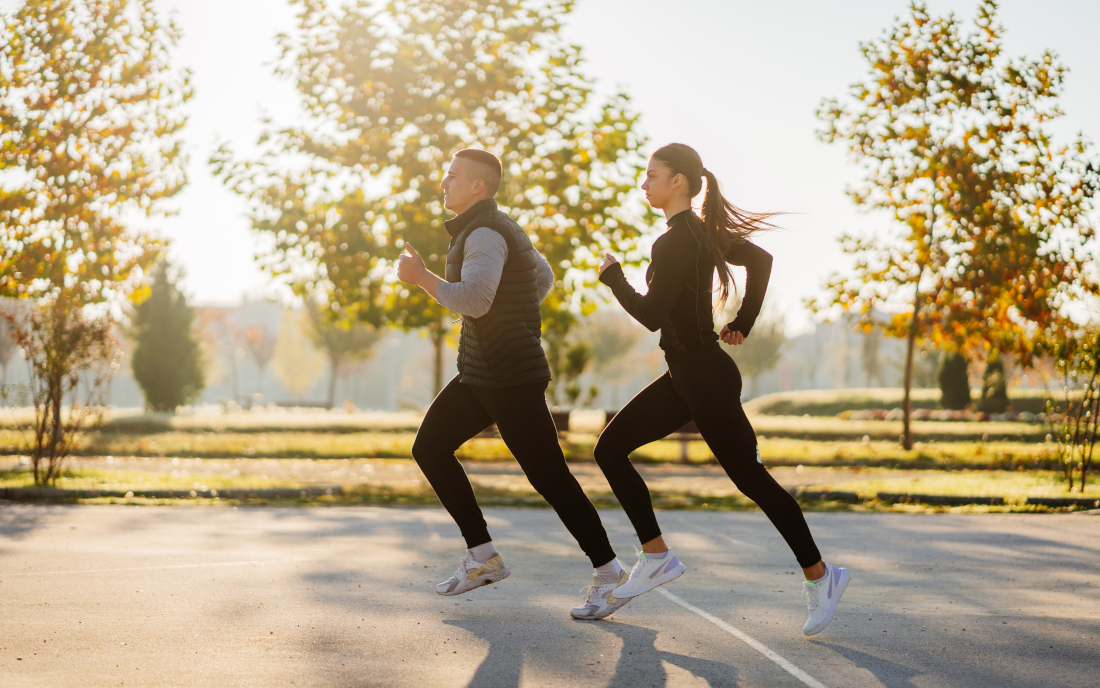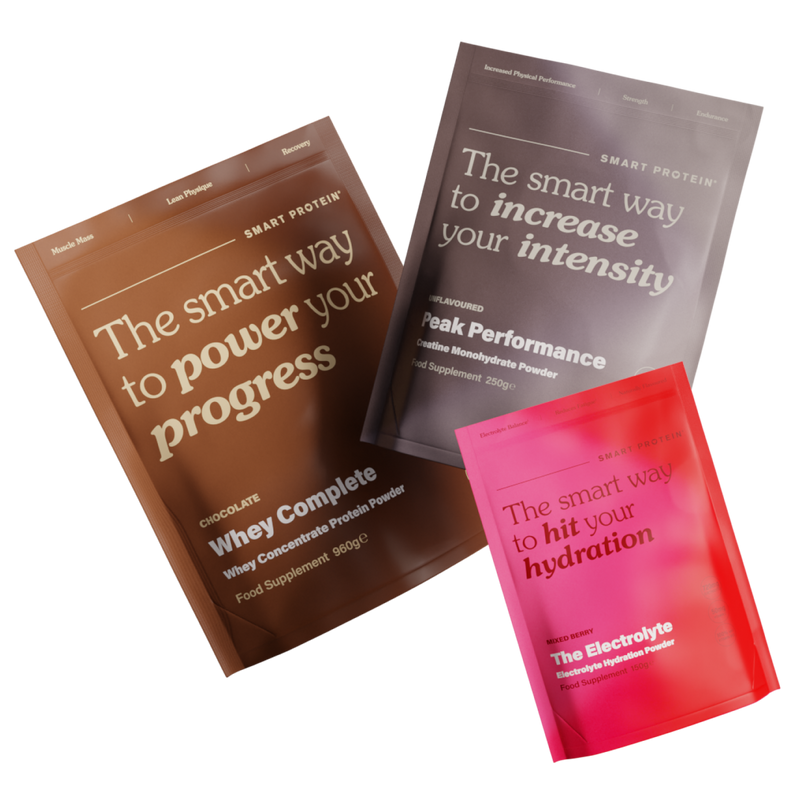By moving more and enjoying regular physical activity, you can boost your digestive system. Here we explore the link between exercise and better gut health.
Are you conscious of the foods you eat to support your digestive health? Do you prioritise staying hydrated and getting enough sleep? Perhaps you even take supplements for added support.
But have you really considered the role of exercise for digestion?
Research shows a strong correlation between exercise and gut health, revealing that physical activity can effectively reduce inflammation, enhance microbial diversity, and regulate bowel movements.
The connection between exercise and the gut is an ever-expanding field, showcasing the numerous advantages it brings. These include relieving constipation, reducing bloating, and a general improvement in gut health.
If you’re struggling with digestive problems or simply want to prevent them, join us as we explore the connection between gut health and exercise.
We’ll provide you with tailored exercises that can help you address each concern and even a daily routine to help you get your gut great again.

The link between gut health and exercise
At Smart Protein, we always stick to the science. So when it comes to gut health (1) and exercise, we want to know exactly how the two work together
Let's take a look at some facts to nicely summarise the relationship between gut and exercise.
SmartFacts…
- Regular exercise can help reduce inflammation in the gut and improve overall gut health.
- Physical activity has been shown to increase microbial diversity in the gut, promoting a healthy gut microbiome.
- A sedentary lifestyle can harm gut health by slowing down digestion and contributing to constipation and other digestive issues.
- Regular exercise has been linked with a lower risk of developing several gastrointestinal diseases, including colon cancer.
- The gut-brain axis (2) is a connection between the gut and the brain, and exercise has been shown to positively impact this relationship, improving both gut and mental health.
- Integrating regular aerobic exercise into your routine can increase gut motility, promote regular bowel movements and contribute to better digestive health.
Exercise for digestion
Regular physical exercise can be beneficial to digestion (3) and improve your gastrointestinal health as it improves blood circulation to the digestive organs.
In doing so, more oxygen and nutrients will reach the cells, boosting their function and enhancing the digestive process as a result. And breathe.
Exercise can also increase the production of digestive enzymes (4), which aid in breaking down food and improving nutrient absorption.
The best exercises for digestion
Aerobic exercise like walking, jogging, cycling, or swimming, can help increase blood flow to the digestive system, which helps digestive function.
Resistance training like lifting weights or bodyweight exercises, can help strengthen the abdominal muscles, which can also improve bowel movements.
If you’re looking to improve your digestion try sports such as yoga, pilates, and callisthenics. These exercises improve flexibility and strengthen the abdominal muscles, leading to better digestion.
The benefit of these particular exercises as well as other stress-busting pursuits like meditation and deep breathing, are twofold.
Did you know? A calm and stress-free mind actually helps to reduce digestive discomfort. Amazing.
Read on to discover even more exercises to benefit your digestive health.
Here is a great YouTube video (5) from Tasha Franken targeting digestion with a Pilates workout. Ideal for home use.
Exercise plan for digestion
- Start with a 10-minute warm-up, such as brisk walking or light jogging, to get your body moving and increase blood circulation.
- Perform three sets of Cat-Cow stretches. Repeat this sequence 10 times per set.
- Follow up with three sets of Seated Forward Fold. Hold this position for 30 seconds per set.
- Add a 15-minute cycling session, either outdoors or on a stationary bike, to the mix.
- Finish with two sets of 30-second Planks. Hold this position for 30 seconds per set, engaging your core muscles.
Exercise to relieve constipation
Exercise can be an effective way to alleviate constipation symptoms and bring on regular bowel movements.
As we now know, regular activity stimulates the muscles in the intestines, and this encourages bowel movements as a result.
The best exercises to help constipation
Let’s take a look at some exercises that can help ease the symptoms of constipation.
Walking is a simple low-impact exercise that is great for stimulating bowel movements. If you aim for at least 30 minutes of brisk walking (6) each day, especially after dinner, you’ll start to feel the benefits in time.
Cycling actually encourages bowel movements. It gets the abdominal muscles going, which can help you digest food. A real gut-boosting bonus.
Squats are also a great way of engaging the lower abdomen muscles, and don’t forget abdominal massages (clockwise direction) to get your bowels going.
Yoga contains specific poses that can help relieve constipation (7) like the Cat-Cow Pose Wind-Relieving Pose, and Bridge Pose.
Dr Melissa Oleson offers YouTube yoga videos targeting digestive issues. This is the video (8) for yoga exercises for constipation you could try at home.
Exercise plan for constipation
Here's a short exercise plan to include in your day.
Spread them throughout your day, or if you can’t fit them into one day, spread them over a number of days.
- Start with a 10 to 15-minute brisk walk after waking up in the morning.
- Perform a series of yoga poses, including Wind-Relieving Pose, Cat-Cow Pose, and Bridge Pose. Hold each pose for 30 seconds to one minute, repeating three to five times.
- Engage in 15 to 20 minutes of cycling on a stationary bike or outdoors.
- Finish with five to 10 squats, gradually increasing the number as you build strength.

Exercise for bloating reduction
Let’s talk about exercises for bloating—something that is very common in many of us. And while it isn’t as troublesome as other digestive problems, it can be painful and embarrassing.
We always target our diet when it comes to bloating, but it’s important to think about exercise for bloating and what we can do to help alleviate it from that perspective.
The best exercises for bloating
Walking is a gentle cardiovascular exercise that can help stimulate digestion and reduce bloating. If you can, 30 minutes or more is ideal.
Yoga, as we know, has poses that can target the abdominal area. In turn, as digestion improves, so does bloating. Poses like Child Pose, Supine Twist, and Happy Baby Pose can actually reduce bloating by improving circulation and releasing gas.
Here’s another great YouTube video (9) by Sarah Beth Yoga showing poses to target bloating you could try at home.
Core exercises like planks, pelvic tilts, and bridges can help beat the bloat too.
Twisting exercises act as a massage to the abdominal area and help stimulate digestion. So give exercises like seated spinal twists and torso rotations to relieve gas and, in turn, bloating.
How to perform exercises to reduce bloating
Here's a short exercise plan to include in your day.
Spread them throughout your day or if you can’t fit them into one day, spread them over a number of days.
- Start with a 10 to 15-minute brisk walk to get your body moving and aid in digestion.
- Perform a series of yoga poses such as Child’s Pose, Supine Twist, and Happy Baby Pose. Hold each pose for 30 seconds to one minute, repeating three to five times.
- Engage in 15 to 20 minutes of cycling, either on a stationary bike or outdoors.
- Include core exercises such as planks, pelvic tilts, and bridges into your routine. Aim for two to three sets of 10 to 15 repetitions.
- Finish with twisting exercises like seated spinal twists and torso rotations. Repeat each exercise five to 10 times.
Exercise for indigestion and gut health
As you can probably tell by now, all the digestive issues we’ve been talking about—like constipation, gas, indigestion, bloating, and gut health—are all interconnected.
When there is a disruption in gut health, it can lead to symptoms like indigestion.

The best exercises for indigestion and gut health
Walking is always the one when it comes to digestive health. As we’ve mentioned, 30 minutes is the golden number.
Yoga like Cat-Cow, Seated Forward Fold and Wind-Relieving Pose are all awesome to help relieve gas. Watch this YouTube video (10) with Adriene for great digestive flow.
Cycling, whether outdoors or stationary, helps support gut health as it stimulates those abdominal muscles.
Core exercises similar to those to target bloating, such as planks, bridges, and pelvic tilts, are your friends here.
Exercise plan for indigestion and gut health
Here is a practical exercise plan to help alleviate symptoms of indigestion and promote good gut health.
- Start with a 10 to 15-minute brisk walk to stimulate digestion and promote bowel movements.
- Perform a series of yoga poses such as Cat-Cow, Seated Forward Fold, and Wind-Relieving Pose. Hold each pose for 30 seconds to one minute, repeating three to five times.
- Engage in 15 to 20 minutes of cycling, either on a stationary bike or outdoors, to stimulate the abdominal muscles and improve bowel movements.
- Include core exercises such as planks, bridges, and pelvic tilts into your routine. Aim for two to three sets of 10 to 15 repetitions.
So there you have it!
Who knew you could target digestive issues with exercise and enjoy better gut health as a result? You can—and now you know how.
Boost your gut health with Smart Protein
If you fancy some yummy supplements to take care of your friendly bacteria, try our Gut Daily Gummies.
Chewy, tasty and oh-so-easy, these gummies get your tummy not just surviving but thriving.
Combine these with the gut-boosting exercises included in this guide, and you’ll keep your digestive health in the green at all times. You’ve got this.
Sources
Smart Protein is committed to sourcing only the best and scientifically-backed research in our articles.
1. Smart Protein
https://smartprotein.com/blogs/wellness/what-is-gut-health
2. Study From The National Library of Medicine
https://www.ncbi.nlm.nih.gov/pmc/articles/PMC4367209/
3. Study From The National Library of Medicine
https://www.ncbi.nlm.nih.gov/pmc/articles/PMC5357536/
4. Study From The National Library of Medicine
https://pubmed.ncbi.nlm.nih.gov/30883471/
5. Youtube Video: De-bloat & improve Digestion Quickly by Tasha Franken
https://www.youtube.com/watch?v=wMCr8Z5afLQ
6. Healthline
https://www.healthline.com/health/constipation/exercises#Cardio
7. Only My Health
https://www.onlymyhealth.com/yoga-poses-to-prevent-constipation-1695722444
8. YouTube Video: Constipation Yoga for Relief by Dr. Melissa Oleson
https://www.youtube.com/watch?v=xTjKuAU0ZI0
9. YouTube video: 20-minute Digestion Healing Yoga for Bloating, Gas & Cramps by SaraBethYoga
https://www.youtube.com/watch?v=KrGIH8wKeIc
10. YouTube Video: Yoga For Digestion Flow by Yoga With Adriene
https://www.youtube.com/watch?v=zJWGhHsPMVQ

